The hiring of interim professionals as an incisive recruitment strategy is picking up. Amid the fear of a looming recession, ever-changing requirement for new skills affecting the labor market, technological advancement, socio and macroeconomic transformation, and, above all, the need to sustain business operations, companies are increasingly opting for interim hires.
Yin and yang: Strategic flexibility and transformation in career path feeding the rise of interim workforce
The flux in the business environment implies leaders adopt a flexible strategy to ensure continuity of business operations. This includes all aspects of operations, from structuring to staffing and recruitment, such as hiring for advanced skills or critical roles. Flexibility demands organizations perceive and mold themselves according to the changing requirements of work and the workforce. And this is what leaders are striving for today—accommodating organizational needs with workforce aspirations.
The relevance of interim hiring as a strategic tool must be seen against this backdrop. Organizations cannot afford to waste time on redundancy. Success of operations is contingent on having ready access to a diverse talent pool. Interim hiring affords this.
While leadership or organizational perspective is one side of the picture, the transformation on the career development front is another. This pivots on the rise of the gig economy in the post-pandemic era and remote working that has made traveling and working from anywhere possible.
The workforce population matrix: Dismantling of traditional employment
Let’s look at the constitution of the workforce by age group: the Gen Z and the millennials on one hand, and the baby boomers on the other. Despite their strikingly different approaches and aspirations, they are inadvertently colluding to feed the trend of the interim workforce.
How?
The Gen Z and millennials prefer a no-frill, no-attachment approach, freedom at work, are willing to experiment with alternative career options, and thrive on being challenged. Given their robust grip on technology, they will leverage their technology skills to try out distinct projects and exploit every opportunity they feel is unique. Job stability does not hold much value compared to the freedom to experiment and live a professional life on one’s own terms.
The aging workers or the baby boomers have a different story. Either retired or relieved by organizations, they are still willing to give career another chance. Flexible career options hold the lure. These job opportunities give them the scope to leverage their experience and rich expertise.
So, what you are seeing is a disruption of the conventional approach to employment. The concept of temporary workers as understood sometime back has changed diametrically. Earlier, it was largely confined to traditional, unskilled workers, and was not a matter of choice. Now, it applies to high-level professionals with sophisticated and unique skills as well, and represents a combination of both necessity and choice.
Interim hiring stands at the interjection of employer and employee aspirations.
Why do we need to know the numbers?
According to US-based industry research provider IBISWorld, in its business environment profiling of the US, the number of temporary workers has risen faster than the growth in population over the long term, with the growing inroad of trained professionals in the temporary workforce.
Amid rising inflation and concerns regarding recession, temporary employees are expected to increase 0.9% to 3.13 million up to 2023. Two industries that are likely to record the biggest impact on revenues because of this growth are office staffing & temp agencies (estimated $248.7bn in revenues in 2023, up 3.5%); and employment & recruitment agencies (projected $32.0bn for 2023, up 3.7%).
What are the benefits of integrating interim hiring in recruitment strategy?
A stitch in time saves nine: Unanticipated or expected gaps are a common issue at the workplace. Now, this could be due to several reasons: employees going on leaves; sudden or unplanned exits; retrenchment of workforce; transition in structuring, such as post-integration or merger; rise of new skill requirements; sudden spike in work amid labor force shortage, etc.
Whatever be the reason, no company can afford work coming to a halt. Operations must carry on at all costs. Through interim hiring, you can address this issue. It is cost-effective, helps you access a diverse pool of talent, and the resources are subject-trained since you are hiring for a specific role or skill.
Time is money. That is what interim hiring is all about. Compared to traditional hiring, which is time-consuming and cumbersome, interim hiring is a flexible recruitment strategy.
You hire only when you need, irrespective of the duration – short or long term. You access the talent pool only when there is a job requirement. Plus, there are no hidden or upfront costs—you pay only when you get the right hire.
Want to move forward, get real. Interim hiring serves as a resource to help you transform your business growth strategy. This plays out in two ways:
- Suppose you are expanding to new markets, domains or territories, scaling up operations significantly, or trying out new product/service initiatives. How will you test your capability or strength in these areas? If you immediately go in for building a permanent staff to cater to the requirement and your efforts bomb, you will incur a huge loss in terms of both resources and cost.
With the help of interim hiring, you can avoid the pitfall. Leverage it to test new initiatives or growth strategies. Study how you are performing in these areas. Analyze the plusses and the areas of development. See what lessons you can draw, and then go full scale.
You want to add a new role at the management level, say Chief DEI Officer. Instead of going for an expensive full-time hire at the start, you could try out interim professionals. This will give you an in-depth idea about how they operate, what issues could arise, how to fix their reporting structure, and if adding the role is worth the effort. With the help of the insights drawn, you can take a rational decision on having a permanent member for this position, or delegating the responsibilities to an existing member. - You want to re-invigorate the momentum in the workplace. Say you want to implement large-scale digitalization. This will disrupt your conventional modus operandi. It will render several processes redundant, with implications for the workforce. You want to tread extra carefully. You want the transformation to take place, but at minimal risk. How do you do that?
You could go for an interim hire. In this case, you will need to hire at the CXO level, given the scale of the initiative. Since the individual is new to your organization, he or she is more likely to be free of the biases associated with the workplace. Plus, they will bring a fresh perspective.
You can leverage their neutrality to iron out a lot of concerns and anxiety that may arise with the process of transformation. The decision to digitalize will definitely be the board’s but how it is carried out will also make a lot of difference.
Another trend is the rise of executive interim management. Given the growing complexity of business operations and the requirement for new management skills, the demand for skilled interim managers is rising. These managers bring rich experience and use their expertise in helping organizations navigate effectively through a change or crisis.
Among the plusses, they bring a fresh perspective which can have a strong positive impact on employee morale, focus on delivering results in a cost-effective manner and on time, and facilitate flexibility or adaptability in an organization (if found unfit, they can be replaced).
Things to keep in mind when developing an interim hiring strategy
Are you connected with your needs? Do extensive need assessment.
Interim hiring can be a double-edged sword. Its benefits notwithstanding, as a leader, you need to tread cautiously. This is because the very plusses can turn into negatives if not strategized properly.
For instance, interim hiring is believed to kill internal mobility. So, when you opt for it, how will you justify your stand?
Or when you hire an interim manager. While having no previous connection with the organization may render the individual free of bias or any political affiliations with the place, it can also work against them being culturally fit. How do you justify that?
Another one: what if interim hires turn out to be a waste of resources? How often can you afford that? Besides conflicting with internal mobility, it will actually set the organization back.
Therefore, the first thing to do is a thorough skill-based need mapping of the organization. What are the skills required? Of these, which are present? Which roles are critical? Which divisions need it? Or are you planning to add a new role? If yes, at which level would you like to add – team or management level?
How will you assess the requirement? For this, you need to hold pointed discussions with the management and with the broader team.
What is the employee attrition rate? Have you done a need-gap analysis? What insights can you draw from that?
How much of the requirement can be filled through interim hiring? How will you find out whether it is the right solution for you? Do you want to use it at an experimental level and see the outcome?
What will be the size or terms of the contract in interim hiring? And how many people will you hire on an interim basis?
How much are you willing to give? What are the interim employee’s expectations? (You wouldn’t want them to badmouth the company on review platforms or social media.)
It is extremely important to have answers to all these questions before proceeding.
This will help you understand your own needs clinically. Leveraging the knowledge and insights, you can plan your strategy – where and how you will allocate the resources so that the outcome is favorable, and you don’t experience any financial loss.
Not all marriages are made in heaven. How will you marry an interim hiring strategy with internal mobility?
The last thing an organization wants is its employees to feel alienated. So, when you zero in on interim hiring, make sure the communication is clear to all the stakeholders. Often, the pressing concern driving you to decide will be time. You need to hire urgently for a project—there is no time to scale up your internal team. Or, you need to fill a critical role, but time is not in your favor.
The key point is to communicate to the people responsibly and effectively. Explain to the concerned stakeholders the necessity for implementing it. Discuss how you will draw the insights from the interim hire’s onboarding and style of work to scale up your own team. This will strengthen their confidence in the organization. They will support the interim hire for successful completion of projects, whether it is a client-specific assignment or an organization-wide initiative.
Ask candidates specific questions, such as on experience and communication ability, to understand their intent and expectations. This will help you ascertain their suitability for the role.
Facilitate communication between the interim and permanent employees for them to coordinate effectively.
Time flies – don’t leave the pilot’s seat. Effective interim hiring depends on the formulation of the strategy and its implementation on time.
Make it incisive and holistic. Incorporate relevant training modules and learning program for the interim hires to quickly get to the job.
So, don’t delay. The sooner you have a strategy in place, the better you will be equipped to face any eventuality.
What are experts for? Last, if you don’t have a strategy in place but need help in interim hiring, hire the services of experts like VBeyond Corporation. We specialize in providing customized recruitment solutions across industries and functions.
To conclude
Given the rapidly changing business environment, organizations need to adopt interim hiring as a recruitment management strategy. It will not just show their agility, but also a progressive leadership and management approach, which is crucial for operational success and workplace modernization.
Interim hiring has numerous benefits to offer. It can help organizations to remain profitable; cut down the loss of productivity due to manpower shortage; try out new initiatives or programs; and add value by bringing in individuals with a different mindset.
However, leaders need to tread carefully while adopting interim hiring as a recruitment management strategy. This is because it can also conflict with internal mobility, which plays a powerful role in employee engagement.
But considering the need to act on time with speed, integrating interim hiring in recruitment management strategy will help. In this era of disruption, no organization can afford to ignore any strategy that has a direct or indirect impact on workforce engagement and business operations.
The key to strike the right balance amidst the various strategies lies in asking the right questions. Only then can you effectively leverage interim hiring as a superpower in recruitment and staffing.
After all…
It is not the answer that enlightens, but the question. – French playwright Eugene Ionesco.


